Milestones in EPA's Land and Waste Management Research History
1978 – EPA Launches an Unprecedented Response to Hazardous Waste at Love Canal
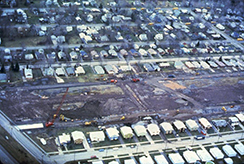 Residents of Love Canal, NY, discover that their community is contaminated by buried leaking chemical containers. The pollution is linked to serious health threats such as cancer and birth defects. President Carter declares an emergency, authorizing EPA to help temporarily relocate about 700 families. EPA researchers conduct the most comprehensive multimedia monitoring study for a hazardous waste site at the time in response to a presidential state of emergency order.
Residents of Love Canal, NY, discover that their community is contaminated by buried leaking chemical containers. The pollution is linked to serious health threats such as cancer and birth defects. President Carter declares an emergency, authorizing EPA to help temporarily relocate about 700 families. EPA researchers conduct the most comprehensive multimedia monitoring study for a hazardous waste site at the time in response to a presidential state of emergency order.
Love Canal Revealed a National Problem; Superfund Provided a Solution
Podcast: August 6, 2018 - Love Canal 40th Anniversary
1980 – EPA Grounds the Superfund Program in Science
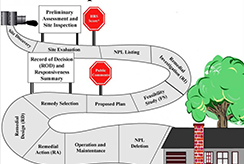 Congress passes legislation authorizing EPA to identify parties responsible for contamination of sites and compel the parties to clean up the sites. EPA science contributes to the implementation of the new Superfund Program created by Congress. The initial program designated $1 billion for cleanup efforts while holding polluters responsible for cleaning up most hazardous waste sites.
Congress passes legislation authorizing EPA to identify parties responsible for contamination of sites and compel the parties to clean up the sites. EPA science contributes to the implementation of the new Superfund Program created by Congress. The initial program designated $1 billion for cleanup efforts while holding polluters responsible for cleaning up most hazardous waste sites.
Superfund
Superfund Redevelopment Initiative
Summary of the Comprehensive Environmental Response, Compensation, and Liability Act (Superfund)
1998 –EPA Provides Technical Support to the Superfund Program
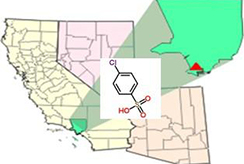 EPA develops Provisional Peer-Reviewed Toxicity Values assessments to support a growing need for toxicity values for the Superfund Program. The Agency also establishes the Superfund Health Risk Technical Support Center to provide human health risk assessment assistance to the program.
EPA develops Provisional Peer-Reviewed Toxicity Values assessments to support a growing need for toxicity values for the Superfund Program. The Agency also establishes the Superfund Health Risk Technical Support Center to provide human health risk assessment assistance to the program.
EPA's Technical Support Centers
Provisional Peer-Reviewed Toxicity Values (PPRTVs)
2000 -EPA Establishes the Ecological Risk Assessment Support Center
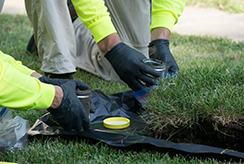 EPA’s Ecological Risk Assessment Support Center provides technical information and addresses scientific questions of concern or interest on topics relevant to ecological risk assessment at hazardous waste sites.
EPA’s Ecological Risk Assessment Support Center provides technical information and addresses scientific questions of concern or interest on topics relevant to ecological risk assessment at hazardous waste sites.
Obtaining Technical Support for Superfund, RCRA and Brownfields Site Issues Fact Sheet
Superfund Risk Assessment
2017 – EPA Releases a 25-Year Update on Liners Used in Landfills
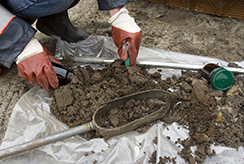 EPA releases a 25-year update on evaluation of performance of hazardous waste systems, quantifying the field performance of engineered containment systems, based on data from hazardous waste landfills (Subtitle C) that are nearing completion of 30 years of post-closure care, and to “ground-truth” expected leachate generation rates and chemistry. The report helps researchers assess and update field performance of Subtitle C landfills.
EPA releases a 25-year update on evaluation of performance of hazardous waste systems, quantifying the field performance of engineered containment systems, based on data from hazardous waste landfills (Subtitle C) that are nearing completion of 30 years of post-closure care, and to “ground-truth” expected leachate generation rates and chemistry. The report helps researchers assess and update field performance of Subtitle C landfills.
Post-Closure Performance of Liner Systems at RCRA Subtitle C Landfills
2017 – EPA Provides Guidance on Technology Used for Volatile Organic Compounds
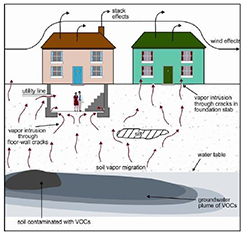 EPA publishes a report that provides guidance for In Situ Chemical Oxidation technology used to remediate contaminated groundwater. The guidance focuses on volatile organic compounds such as perchloroethylene, a chlorinated solvent used in dry cleaner operations.
EPA publishes a report that provides guidance for In Situ Chemical Oxidation technology used to remediate contaminated groundwater. The guidance focuses on volatile organic compounds such as perchloroethylene, a chlorinated solvent used in dry cleaner operations.
2017 - EPA Uses Innovative Techniques to Clean Up Contamination from Soil and Groundwater
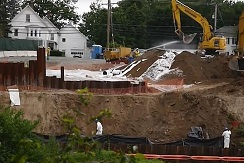 EPA conducts applied research using numerous innovative techniques to clean up contamination from soil and groundwater to protect and restore subsurface environments. Most of these techniques involve speeding up the rates of in-situ chemical reactions and all involve monitoring changes in chemical concentrations at depth. The work is done in cooperation with EPA’s Office of Superfund Remediation and Technology Innovation, other federal partners, and states.
EPA conducts applied research using numerous innovative techniques to clean up contamination from soil and groundwater to protect and restore subsurface environments. Most of these techniques involve speeding up the rates of in-situ chemical reactions and all involve monitoring changes in chemical concentrations at depth. The work is done in cooperation with EPA’s Office of Superfund Remediation and Technology Innovation, other federal partners, and states.
Office of Superfund Remediation and Technology Innovation (OSRTI)
2018 – EPA Launches the PVIScreen Model
 EPA’s PVIScreen Model helps provide evidence for the occurrence of petroleum vapor intrusion (PVI). PVIScreen automatically conducts an uncertainty analysis, which repeatedly runs the model with differing values of site-specific factors.
EPA’s PVIScreen Model helps provide evidence for the occurrence of petroleum vapor intrusion (PVI). PVIScreen automatically conducts an uncertainty analysis, which repeatedly runs the model with differing values of site-specific factors.
PVIScreen
